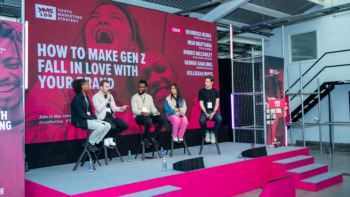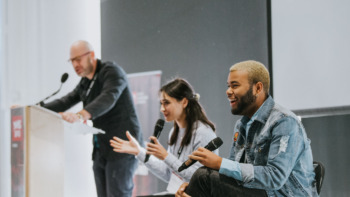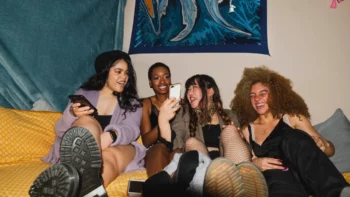With the creator economy currently estimated at $104.2 billion dollars, it has already more than doubled in value since 2019. This growth isn’t showing signs of slowing down any time soon – and it’s time for brands to listen up and pay attention. In this blog, we’ll give a whistle-stop tour of creator marketing and discuss why brands need to mobilise this booming industry in 2023.
For the in-depth write up (and so much more!), download our 2023 report Enhance Your eCommerce Potential With Creator Marketing today!
Influencers vs creators: twin flames, or different entities?
Influencers and creators are terms that are often used interchangeably – but there are a few important distinctions between the two. Let’s dive in…
A content creator is an individual who produces consumable digital content, such as videos, photos, reels and blogs around a specific niche that they have become an expert in over time.
They aren’t creating their content with the sole purpose of gaining followers, but instead crafting stories to inspire and entertain their audiences. An influencer, however, is someone who has the power to affect purchasing decisions through their position and relationship with their audiences.
However, don’t be fooled by the differences in names. Creators can have just as much influence on purchasing power – specifically for Gen Z audiences. In fact, exclusive 2022 research from Voxburner revealed that the term ‘content creator’ had the most trust associated with it, in comparison to the word ‘influencer’ which had 17%.
Examples of influencers vs creators
Fitness fanatic and celebrity trainer Bradley Simmonds’s online presence is best described as an influencer. Simmonds’ social media feed is specifically curated around fitness and almost always circles back to his commercial product (in this case, his fitness product ‘Get It Done’ and his eponymously titled book).
However, when looking at a creator such as EJ Marcus, (who became a TikTok gem for their sketches of relatable characters *some of them hit a little too close to home, by the way*…), it’s clear there’s no hard sell. The creator is just creating content they know their audience enjoys consuming – and as a result, has built a dedicated community of just under 500,000 followers.
Despite having differences, it’s important for brands to note that both creators and influencers are integral parts of each other’s worlds – not all individuals are 100% influencer and not all individuals are 100% creator – most are a blend of the two.
What are the biggest platforms for creators?
Unsurprisingly, Instagram is the most popular app for creator and influencer marketing, with 67% of brands using Instagram for their creator and influencer marketing. However, when it comes to reaching Gen Z, TikTok is actually the more preferable platform, with data from Hootsuite revealing the app had overtaken Instagram in popularity for Gen Z users.
YouTube also remains another big player in the creator marketing space, accelerated more recently by its introduction of YouTube Shorts. Dubbed as a ‘clone’ to TikTok, YouTube Shorts are short-form, vertical video content created via smartphones for 15-60 second periods. Viewers can share, like, comment, dislike and subscribe to channels all whilst viewing the video.
YouTube holds promise for creators looking to monetize their work and grow, allowing them to attract audiences through short form content and later introduce these audiences to quality long-form content.
It’s also been announced as the title sponsor of VidCon, the world’s biggest convention for creators, taking back the reins from TikTok who were last year’s sponsors.
Increase your earning potential through creator marketing
If you’re a brand who hasn’t considered using a creator in your marketing strategy, it’s time to get familiar, because the earning potential is huge.
Attract new audiences. Creators already have an established voice and community – they know their audience and exactly how to appeal to them. If you’re a brand looking to infiltrate a new community or attract new audiences, consider working with a creator who has a speciality in the niche you’re trying to target.
Don’t be fooled by the name – creators are hugely influential. When creators talk, people listen. Their communities are underpinned by trust, so when they recommend a product, their endorsement appears authentic and credible. As a result, those who follow the creator are likely to purchase the product as it feels as though they’ve received a recommendation from a trusted friend.
Creators are a more cost effective option. Leveraging the creator community is a powerful way to reduce your costs. Brands can get rights to the content for a more reasonable price than macro influencers, allowing brands to repurpose content across the marketing mix and conduct targeted paid optimisation.
Creators differentiate your brand
Creators are a great way to differentiate your brand from the competition, allowing you to bring a fresh face to your brand and reach new audiences. Lancome recently made headlines after appointing Emma Chamberlain (a 21 year old YouTube creator) as their newest ambassador.
A brand previously known for partnerships with A-List celebrities including Julia Roberts and Penelope Cruz, Chamberlain’s appointment appears to mark a strategic shift that puts Gen Z consumers at the forefront.

Boost your brand’s potential with Student Beans Creators
At Student Beans, we recognise that Gen Z trust (and are best influenced by) their peers. As a result, we’ve developed a specially curated team of young creators who are making waves in their own spaces; genuine, original content creators who deliver ‘real’ campaigns to their peers.
Hear it from our Head of Influencer Marketing, Ruby Soave:
“Creators foster – and influence – communities. They are experts at providing entertainment, information and creating the conversations that count. Gen Z increasingly distrust ‘influencers’; so at Student Beans we work closely with – and support the development of – Gen Z creators who are emerging onto the scene. It is fascinating to see how quickly their spheres of influence can climb: we are repeatedly witnessing students and young graduates launch their own direct-to-consumer (DTC) brands, built from the insights and support of their TikTok and Discord communities – some within a year of being on the platform(s)! Creators can provide so much more than just content: they are expert social media strategists, understanding their performance on platforms and how to engage their respective community at the highest level.”
If you’re a brand looking to accelerate your creator marketing strategy, our 2023 Enhance Your eCommerce Potential With Creator Marketing report is a must read. Download it here today.














